Details Of Israel’s Long-Range Strike That Decimated Yemeni Port Emerge
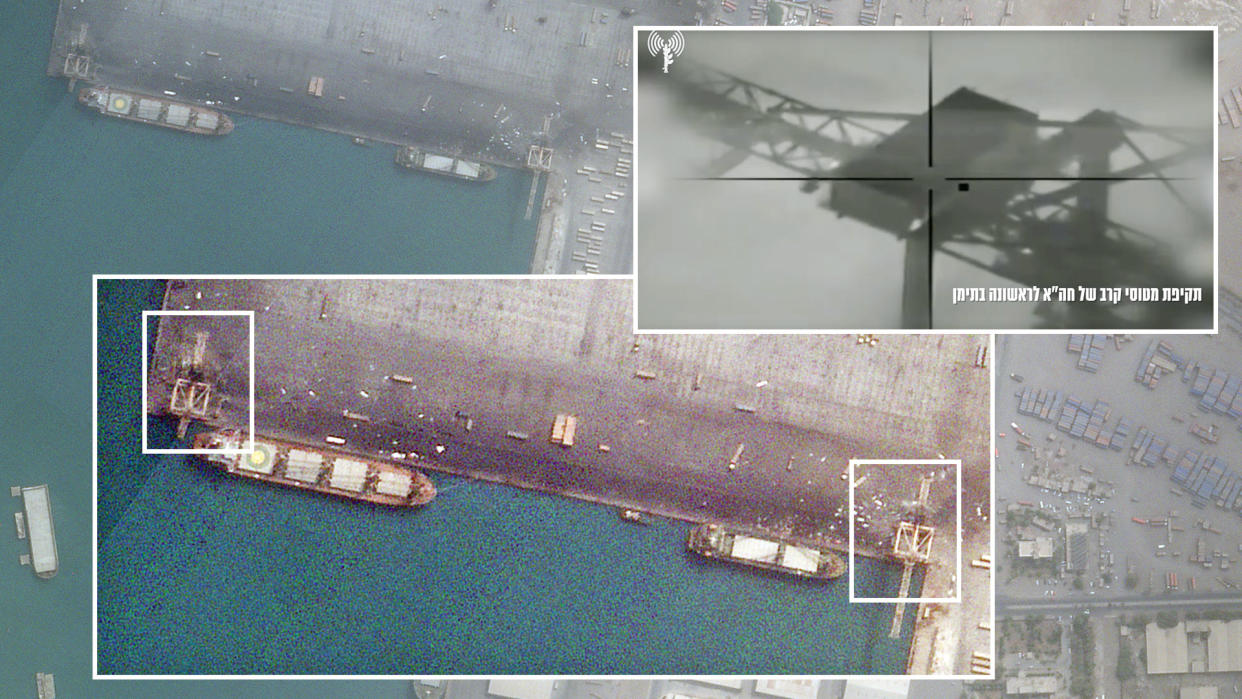
The Israel Defense Forces (IDF) have posted a series of videos depicting the operation to punish Houthi rebels in Yemen for their deadly drone attack on Tel Aviv early in the week. Named Operation Outstretched Arm, the long-range air strikes focused on destroying fuel storage and other infrastructure at a crucial port in the western coastal city of Hudaydah (also written Hodeida) on the Red Sea. You can read about the strike in our initial reporting here. Israel says the target set was selected because it directly facilitates weapons transfers from Iran to the Houthis. We are also seeing new satellite imagery showing just how effective the Israeli Air Force was at decimating its target area.
As you can see below in these high-resolution satellite images taken by Maxar, the majority of the fuel storage area is totally destroyed. We also don’t know what parts of the facility were in operation and what parts weren’t, or the Israeli intelligence that led to their targeting scheme for the site.
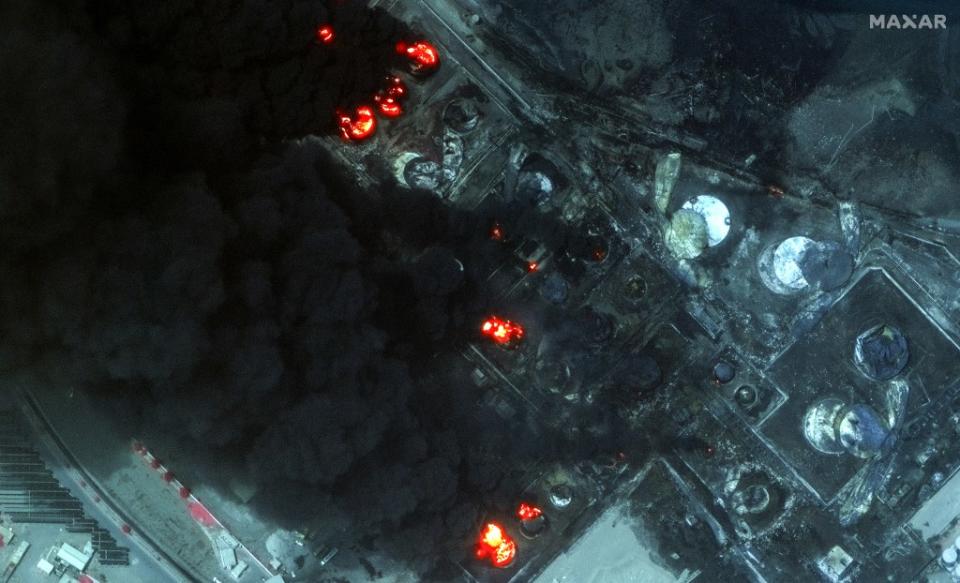
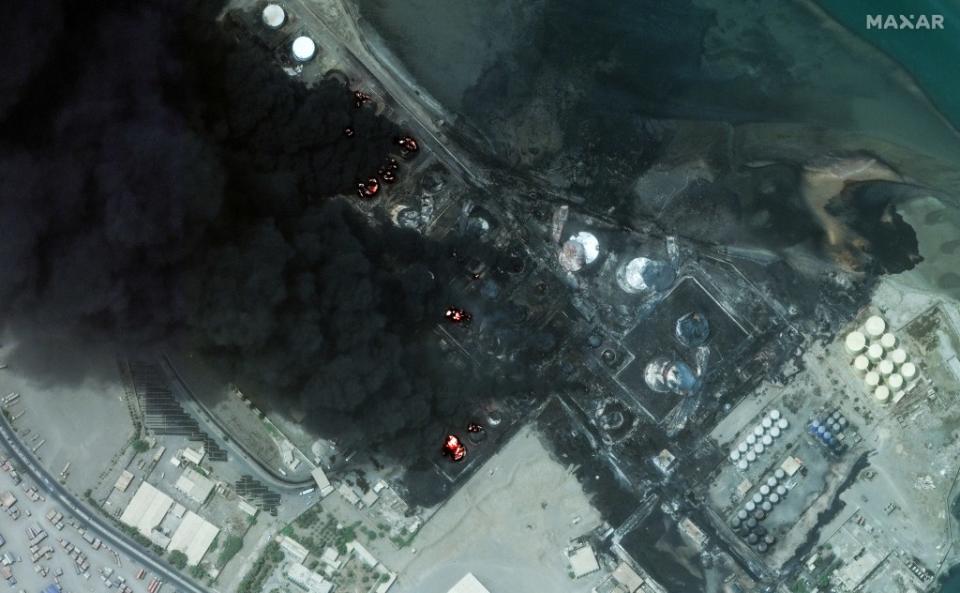
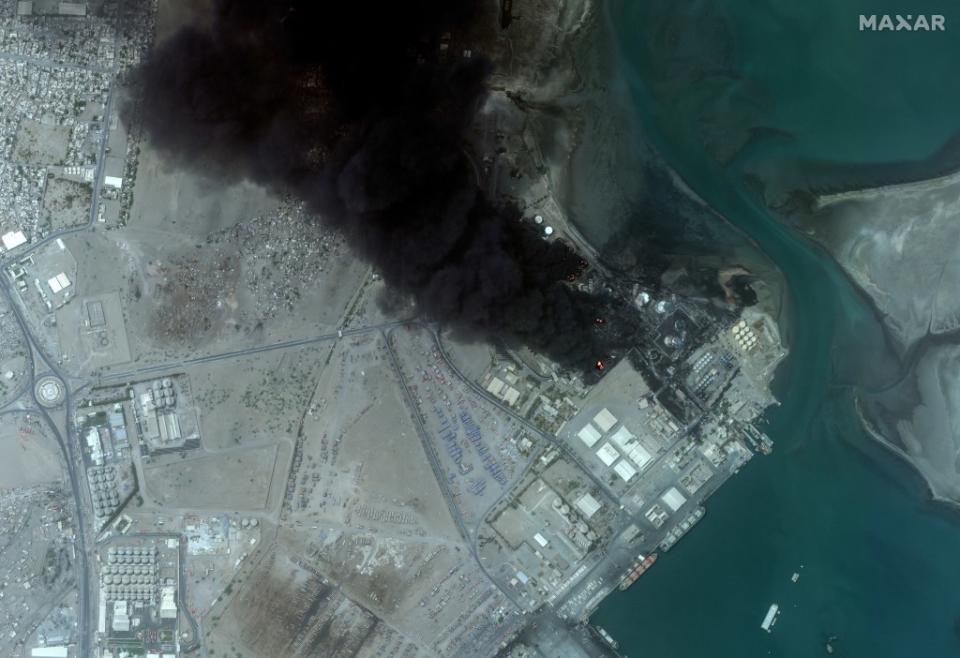
These are the before images taken prior to the strikes.
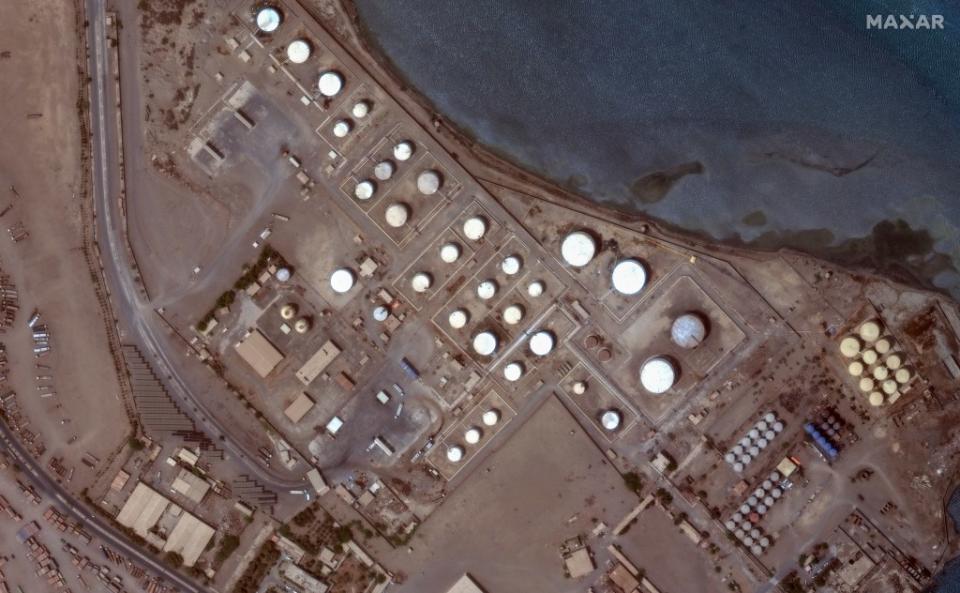
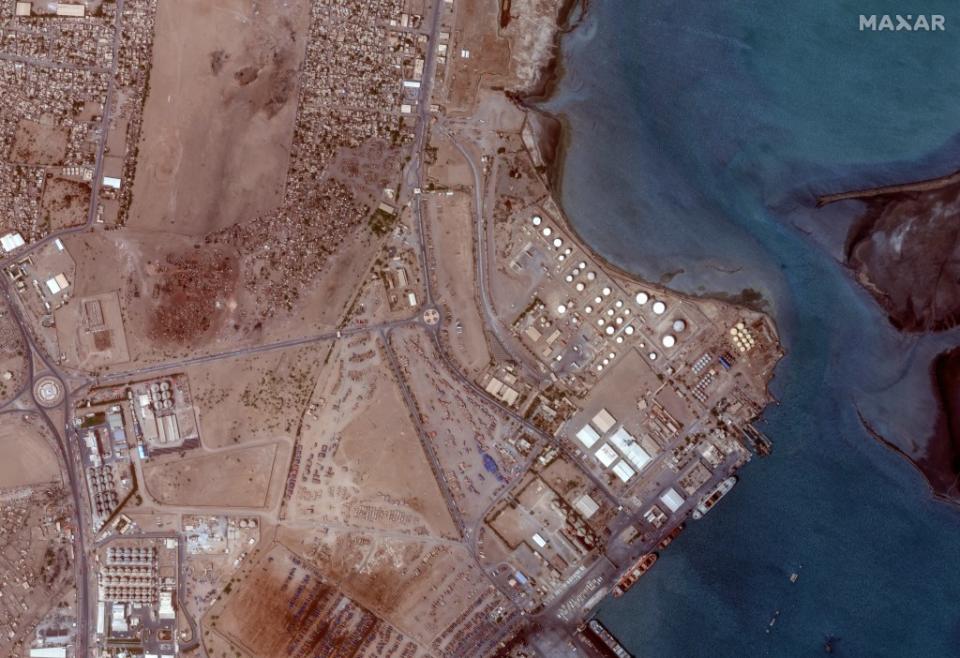
Yesterday we mainly got images and video of an unarmed IAF F-15 Baz fighters that supposedly pertained to the strikes. That has changed today with multiple videos being released showing parts of the operation.
The video below depicts a man-in-the-loop (MITL) control feed from what is likely a Delilah air-launched cruise missile or a SPICE 2000 guided bomb. MITL allows for very precise targeting, including at standoff distances. You can read all about Israel’s preference for this guidance method here. In this case, multiple weapons are seen being pumped into the same target or targets — heavy dockside cranes.
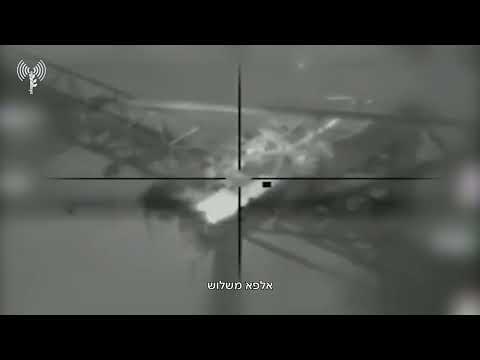
The port has just two of these cranes, both of which appear severely damaged in post-strike satellite imagery obtained by TWZ via Planet Labs and Maxar.
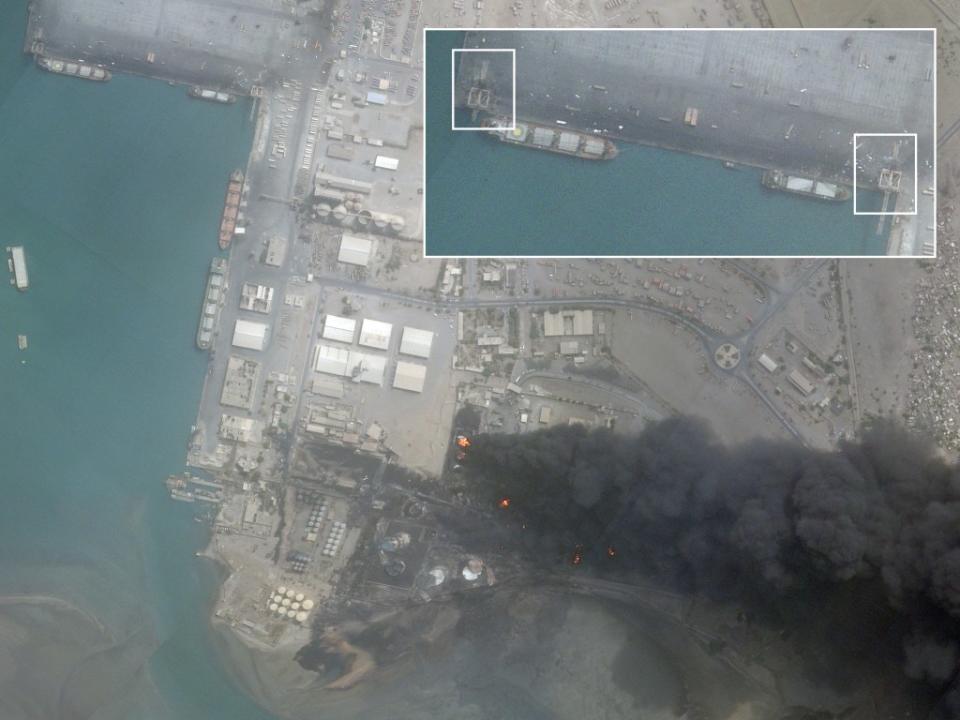
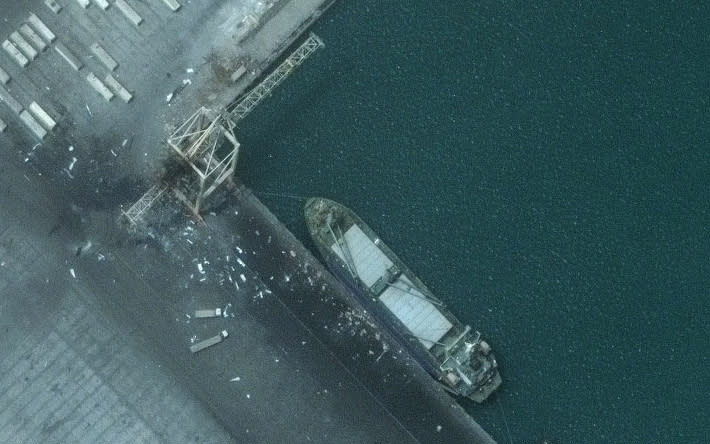
In a very rare move, we get a look at one of the IDF’s handful of aging KC-707 tankers from the 120th “Desert Giants” squadron refueling an F-16I. Getting a view of the KC-707’s remote vision system is certainly unique as is the fact that the video is cropped so as not to disclose the weapons and other stores the F-16I is carrying under its wings. An AIM-120 Advanced Medium Range Air-to-Air Missile (AMRAAM) is seen on its wing.

It’s also worth noting that this “Sufa” is equipped with an expanded satellite communications suite installed along its spine. This system is still relatively new to the F-16Is, but similar installations have been present on F-15A/B/C/D Bazs and F-15I Ra’ams for some time, as well as larger aircraft like the KC-707. The satellite terminals can offer critical, secure beyond-line-of-sight communications for high-performance tactical aircraft, especially when employed on long-range strike operations, which can enable real-time remote command and control and enhanced situational awareness, intelligence sharing, and more. Aircraft equipped with these systems can send datelinked information from all the aircraft that share an active network within line-of-sight back to command centers and support aircraft far away.
The IDF has also posted a video of an F-35I Adir that took part in the strikes. A live AIM-120 AMRAAM can be seen in its weapons bay as it opens after coming to a stop at the end of its sortie. The jet is from the 140th “Golden Eagle” squadron.
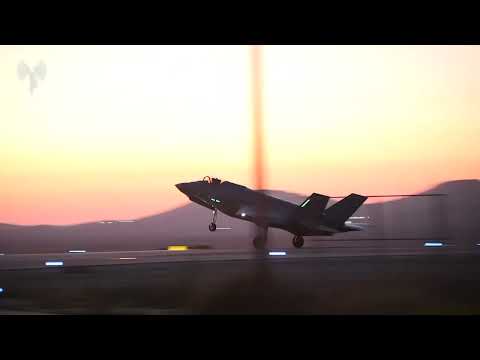
The Houthis have released an image of what the fire looked like on the ground:
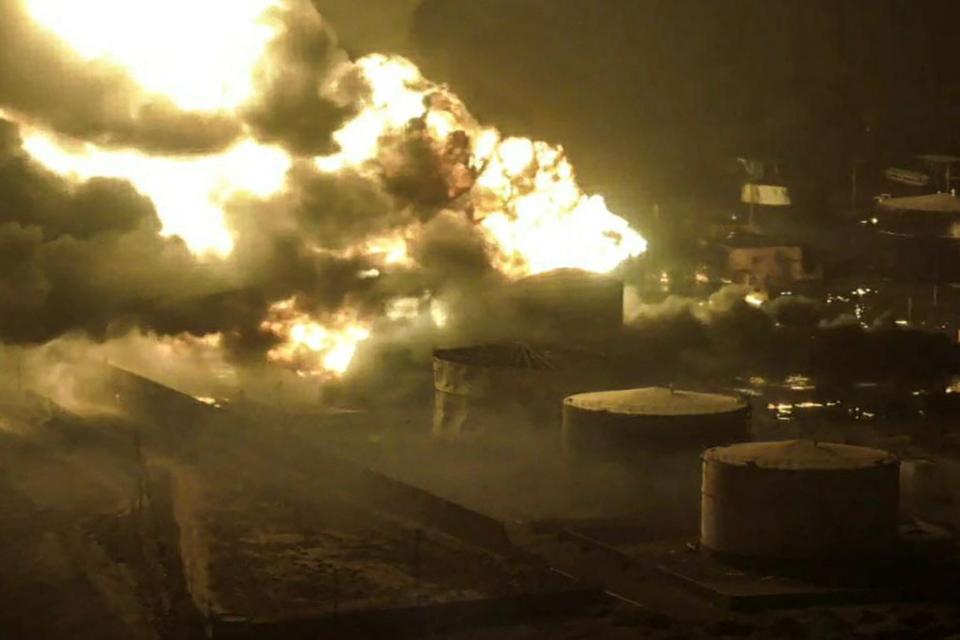
The strikes, which are now known to have included F-15, F-16, and F-35 fighters, as well as KC-707s, went far beyond what the U.S.-led coalition has executed in recent months. Those missions were squarely focused on Houthi military capabilities, especially those surrounding the use of weaponry that could threaten shipping, not multi-purpose infrastructure. Israel’s decision to decimate the fuel reserves in Hudaydah and take out the only two large overhead cranes at the port was clearly focused on sending a deterrent message. The loss in energy reserves alone is very substantial and the cranes will not be easily replaced, slowing shipping at the port considerably. This, in turn, could have much broader ramifications. The United Nations has said in the past that approximately 80 percent of all humanitarian aid and the majority of all foreign imports into Yemen pass through this port.
“Israel's necessary and proportionate strikes were carried out in order to stop and repell the Houthi's terror attacks after 9 months of continuous aerial attacks toward Israeli territory.”
Hear from IDF Spokesperson RAdm. Daniel Hagari on Israel’s response to the Houthi… pic.twitter.com/VEocconfhJ— Israel Defense Forces (@IDF) July 20, 2024
After 9 months of continuous aerial attacks by the Houthis in Yemen toward Israel, IAF fighter jets conducted an extensive operational strike over 1,800km away against Houthi terrorist military targets in the area of Al Hudaydah Port in Yemen. This port serves as an entryway for… pic.twitter.com/AGJpjsyfs5
— Israel Defense Forces (@IDF) July 20, 2024
According to the Times of Israel, the Houthis have fired over 220 long-range weapons at Israel since October 2023. The news outlet also reports that the drone strike that set off this retaliation operation flew an indirect route to its target in Tel Aviv, which made spotting and intercepting it tougher. The Houthi’s modified Samad-3 which the Houthis may be calling “Jaffa,” the Palestinian name for the ancient port city out of which Tel Aviv grew, supposedly flew a whopping 1,600 miles over Eastern Africa, including Egypt, before hooking over the Eastern Mediterranean and approaching Tel Aviv from the west. Israel is increasing its radar operator force in order to better spot these slow and small targets coming from abnormal vectors. The U.S. has experienced similar ‘domain awareness’ gaps, but Israel’s integrated air defense system is extremely dense and arguably the best on Earth, with unique sensors in place to spot these types of threats — if they are looking in the right direction.
Overall, this was one of Israel’s longest-range operations to date and it serves as a reminder to potential foes of its tailored ability to execute complex air operations far from its own borders.
The Houthis appear to have already responded to the strike, firing a ballistic missile at Israel, which was intercepted by the IDF’s Arrow 3 system. Since then, there have been no additional known attacks.
The IDF Aerial Defense Array successfully intercepted a surface-to-surface missile that approached Israeli territory from Yemen using the "Arrow 3" Aerial Defense System.
The projectile did not cross into Israeli territory. The incident has concluded. pic.twitter.com/gZ3NKmqVWF— Israel Defense Forces (@IDF) July 21, 2024
It will be interesting to see if the Houthis respond further. No kinetic action has yet kept them from stepping back from their constant attacks on shipping and Israel. Now we’ll see if Israel’s big act of deterrence was effective or not.
Contact the author: Tyler@twz.com
